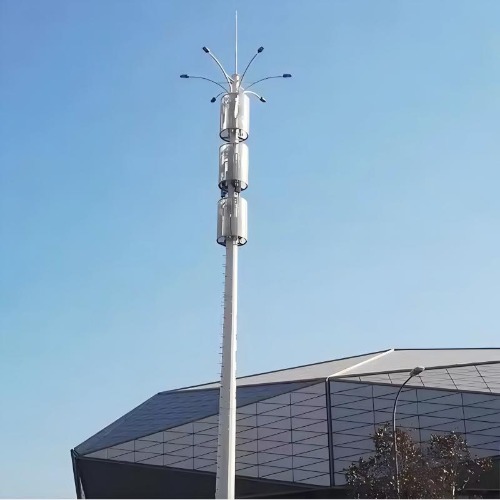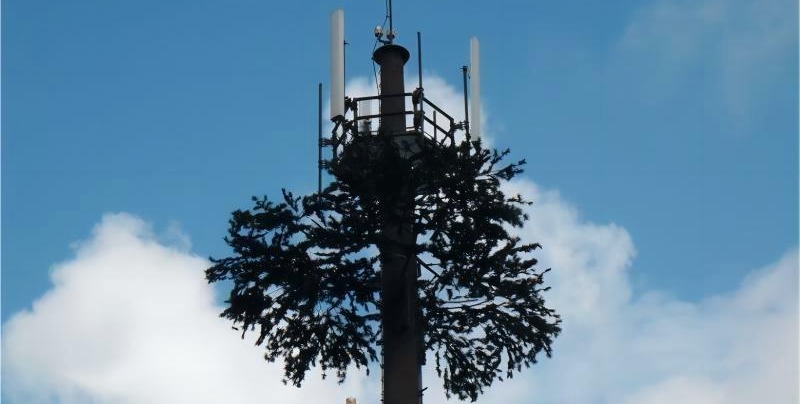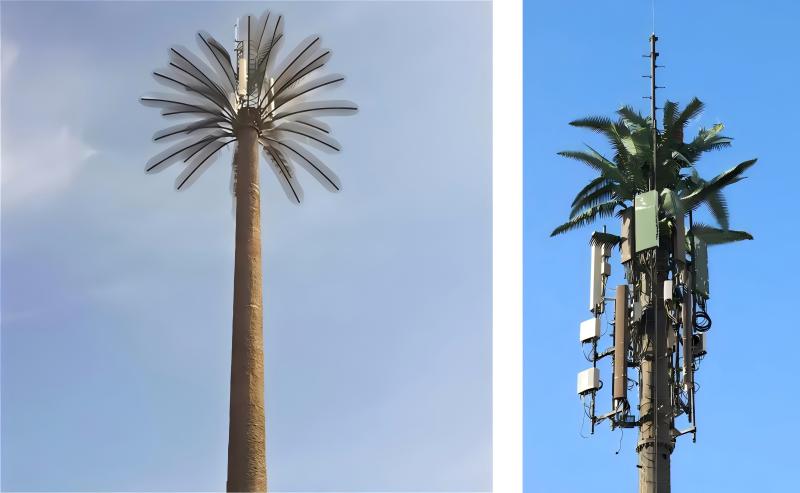I. Camouflage Tower Fundamentals
Definition: Structural towers engineered to visually blend with surroundings while maintaining full functionality.
Core Objectives:
-
Minimize visual intrusion in sensitive areas (residential, historic, scenic)
-
Reduce vandalism/theft risk in remote locations
-
Conceal critical infrastructure (military/security)
-
Meet strict zoning/regulatory requirements
Key Engineering Principles:
-
Spectrum Matching: Replicate surrounding reflectance across visible, IR & radar bands
-
Texture Replication: Mimic surface granularity (bark, concrete, foliage)
-
Form Disruption: Break recognisable tower silhouettes
-
Material Adaptation: Use non-reflective, radar-absorbing composites

II. Camouflage Tower Classification
1. Environmental Blending Towers
| Subtype | Technical Specifications | Applications |
|---|---|---|
| Forest Towers | - Glass-reinforced polymer (GRP) bark-textured cladding - Antenna mounts disguised as tree branches - Custom color matching using RAL K7 woodland palette |
Cellular networks in national parks Wildlife observation posts |
| Rockface Towers | - Geopolymer concrete with embedded local aggregates - Non-reflective angled facets (10°–45°) - Radar-diffusing surface treatments |
Mountainous telecom sites Border surveillance |
| Desert Towers | - Sand-textured polyurethane coating (RAL 1019) - Heat-dissipating vent designs mimicking dunes - UV-stable materials resisting 50+°C temps |
Oil field communications Military desert ops |
2. Urban Camouflage Towers
| Subtype | Technical Specifications | Applications |
|---|---|---|
| Stealth Steeple | - Church spire profile with internal lattice structure - Bell tower acoustic dampening for equipment noise - Lead-coated copper exterior (patina aged) |
Historic district 5G deployment |
| Monopalm Trees | - FRP trunk with polyethylene fronds (wind rating 130km/h) - Internal stainless steel reinforcement spine - Rain gutter systems disguised as vines |
Resort area telecom High-end residential |
| Vent Stack Towers | - Double-walled chimney design with thermal baffles - Industrial-grade powder coating (RAL 7022) - Emissions-compliant heat dissipation |
Factory complexes Port authority systems |
3. Architectural Mimicry Towers
| Subtype | Technical Specifications | Applications |
|---|---|---|
| Flagpole Towers | - Telescoping aluminum sections (max 40m) - Internal waveguide antenna feeds - Halyard pulley system integration |
Embassies & government compounds Urban microcells |
| Water Tower Replicas | - Pressurized FRP tank shell (holds 20,000L) - Structural lattice inside tank cavity - Functional water level indicators |
Municipal infrastructure Rural water districts |
| Billboard Towers | - Digital display mounting structure - Cable raceways behind ad panels - 360° service catwalks |
Highway telecom Urban advertising |
4. Military Concealment Towers
(Note: Declassified tech only)
| Subtype | Technical Specifications | Applications |
|---|---|---|
| RF-Stealth Masts | - Carbon fiber composites with radar-absorbent mats (RAM) - Reduced RCS profile (<0.1 m² at X-band) - IR-suppressing thermal wraps |
Forward operating bases ELINT stations |
| Rapid-Deploy Scrim | - Modular camo netting with spectral signature control - Lightweight tensioned membrane (3kg/m²) - Multi-band frequency selective surfaces (FSS) |
Mobile artillery radar Temporary surveillance |
| False Structures | - Inflatable decoy towers with corner reflectors - Heat signature emulators - EMI-shielded equipment pods |
Electronic warfare deception Force protection |
III. Camouflage Technology Deep Dive
Material Science:
-
Coatings: Ceramic-loaded epoxy with chameleon pigments (shift with viewing angle)
-
Texturing: Laser-etched mold replication of natural surfaces (±0.02mm accuracy)
-
Thermal Management: Phase-change materials (PCM) in cladding to mask heat signatures
Electromagnetic Engineering:
-
Frequency Selective Surfaces (FSS): Transparent to operational bands (e.g., 1.7–2.5 GHz) while blocking others
-
Radar-Absorbing Structures (RAS): Carbon nanotube-doped composites attenuating 8–18 GHz
Structural Integration:
-
Wind load preservation: Camo elements engineered for ≤5% additional drag
-
Maintenance access: Hidden hatches with biometric security
-
Lightning protection: Dissipative strips embedded in artificial bark

IV. Performance Metrics Comparison
| Camouflage Type | Visual Detection Range | Radar Cross Section | Maintenance Cycle | Cost Premium |
|---|---|---|---|---|
| Forest Blending | ≤100m | Baseline | 18 months | 25–40% |
| Urban Stealth | ≤50m | +0.5 dBsm | 24 months | 35–60% |
| Military RF-Stealth | ≤30m | -20 dBsm | 6 months | 200–400% |
| Architectural Mimic | ≤15m | +3 dBsm | 60 months | 70–90% |
V. Implementation Guidelines
-
Site Analysis Phase
-
LiDAR scanning of surroundings
-
Spectral reflectance mapping (350–2500nm)
-
Historic visibility studies (seasonal variations)
-
-
Regulatory Compliance
-
FAA obstacle marking exemptions
-
Local heritage preservation codes
-
Military security clearance requirements
-
-
Lifecycle Considerations
-
UV degradation testing (3000+ hour accelerated weathering)
-
Vandalism resistance (IK10 impact rating)
-
Fire safety (Class A flame spread rating)
-
Case Study: Singapore's "Trees of Knowledge" project deployed 132 monopalm towers in Marina Bay, reducing visual impact complaints by 92% while delivering 5G coverage. Each "tree" contains 18 antennas with <0.5dB signal loss through FRP cladding.
Learn more at www.alttower.com
